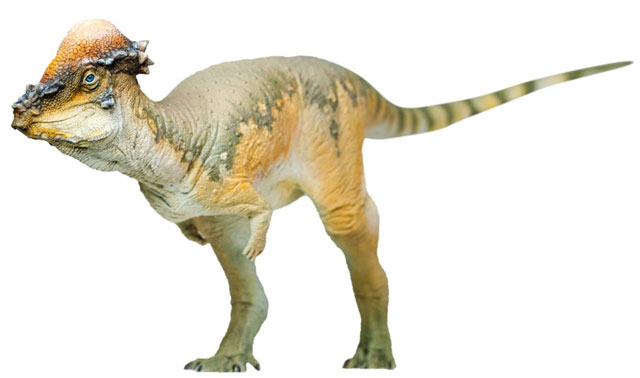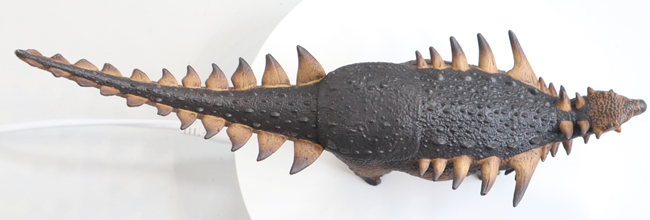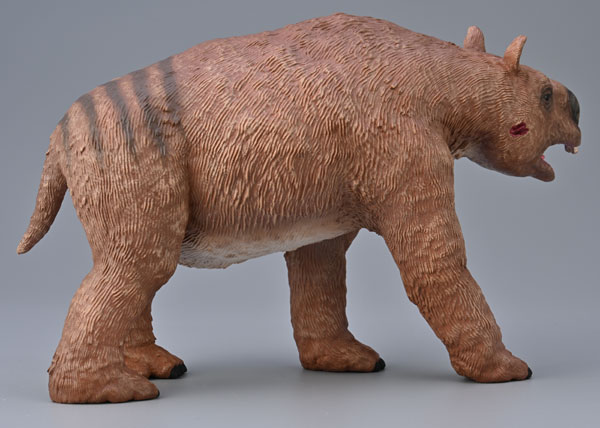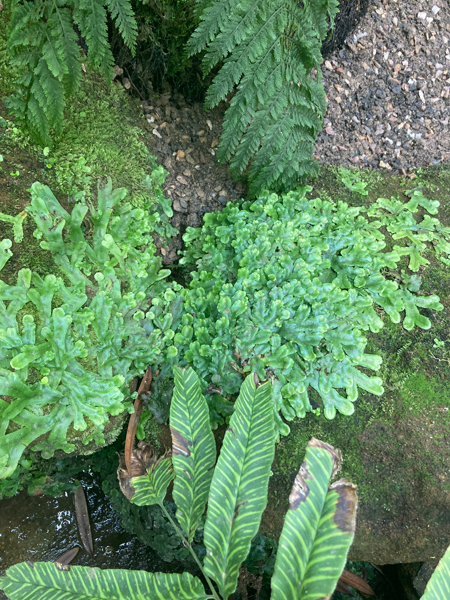The thick-skulled, dome-headed pachycephalosaurs are among the most enigmatic and yet, poorly known of all the Dinosauria. For example, these ornithischians, with their elaborate cranial ornamentation are thought to have evolved complex social behaviours. After all, the idea that those super thick skulls played a role in butting contests has been around for a long time. The pachycephalosaurs have a new member. The recently described Zavacephale rinpoche represents the oldest pachycephalosaur known to science. It roamed Mongolia around 115 to 108 million years ago. Its discovery helps palaeontologists to reconstruct the origins and the early evolution of the pachycephalosaurians.

The fossil represents a sub-adult, but the skull already has the distinctive dome. This indicates that pachycephalosaurs developed features relating to combat or display before they reached adulthood. Picture credit: Masato Hattori.
Picture credit: Masato Hattori
Zavacephale rinpoche
The fossil specimen, thought to represent a sub-adult, was discovered in the Khuren Dukh locality of the Eastern Gobi Basin. Not only is the specimen the oldest pachycephalosaur known to science, the skeleton is the most complete for this type of dinosaur found to date.
Corresponding author for the study, Lindsay Zanno, an associate research professor at North Carolina State University commented:
“Pachycephalosaurs are iconic dinosaurs, but they’re also rare and mysterious.”
The fossil material was found by Tsogtbaatar Chinzorig (Mongolian Academy of Sciences), the lead author of the study published in the journal “Nature”. The Z. rinpoche specimen was not fully grown when it died. However, it already bore a fully formed dome, though without much of the additional ornamentation found on other pachycephalosaur fossils. The genus name is derived from zava which means “root” or “origin” in Tibetan and “cephal” which translates from Latin meaning head. The species name is derived from the Tibetan phrase for “precious one” as the domed skull was exposed on a cliff like a cabochon jewel.

Lindsay Zanno of the Department of Biological Sciences, (North Carolina State University), highlighting the morphology of the Zavacephale rinpoche skull. Picture credit: Alfio Alessandro Chiarenza.
Picture credit: Alfio Alessandro Chiarenza
Predating All Other Pachycephalosaur Fossils by at Least 14 Million Years
Zavacephale rinpoche pushes back fossil evidence of the frontoparietal dome by at least fourteen million years. Furthermore, the skeleton, which is more than fifty percent complete, preserves regions of the body not scientifically described in any other pachycephalosaur. For example, scientists could examine an almost complete tail covered in ossified tendons. In addition, bones from the hand, a first for a pachycephalosaur, were found.
Intriguingly, the specimen had a gastrolith mass preserved in the stomach region. These stomach stones suggest an omnivorous diet. The stones ground up tough plant food to help with digestion. It had been thought that these dinosaurs were herbivores. However, recent discoveries such as fang-like teeth had led some researchers to speculate that they were carnivorous ornithischians. The discovery of these stomach stones lends support to the theory that pachycephalosaurs probably ate both plants and animals, that they were omnivores.
To read a blog post from Everything Dinosaur: Pachycephalosaurus – Was it Carnivorous?
Highlighting the significance of Zavacephale rinpoche Tsogtbaatar Chinzorig stated:
“Z. rinpoche predates all known pachycephalosaur fossils to date by about 15 million years. It was a small animal – about three feet or less than one metre long, and the most skeletally complete specimen yet found.”
Chinzorig added:
“Z. rinpoche is an important specimen for understanding the cranial dome development of pachycephalosaurs, which has been debated for a long time due to the absence of early diverging or pre-Late Cretaceous species and the fragmentary nature of nearly all pachycephalosaurian fossils.”
Calculating the Age of a Dinosaur
A thin slice was carefully removed from a lower leg bone. This slice was then subjected to histological analysis to calculate the dinosaur’s age when it died. For the first time, palaeontologists had an almost complete pachycephalosaur skull with associated limb bones to help calculate the growth stage of the skeleton.
Lindsay Zanno explained:
“Pachycephalosaurs are all about the bling, but we can’t use flashy signalling structures alone to figure out what species they belong to or what growth stage they’re in because some cranial ornamentation changes as animals mature. We age dinosaurs by looking at growth rings in bones, but most pachycephalosaur skeletons are just isolated, fragmentary skulls. Z. rinpoche is a spectacular find because it has limbs and a complete skull, allowing us to couple growth stage and dome development for the first time.”
The fossil material has pushed back the fossil record of pachycephalosaurs by at least fourteen million years. In addition, the research team have a much more complete fossil specimen to study. Moreover, Zavacephale rinpoche demonstrates that dome heads developed in pachycephalosaurs before they reached adulthood.
Lindsay Zanno quipped:
“If you need to headbutt yourself into a relationship, it’s a good idea to start rehearsing early.”
Late Cretaceous Pachycephalosaurs
Most pachycephalosaur fossils are found in Upper Cretaceous deposits, primarily deposits laid down in the Campanian and Maastrichtian.

Austin the Pachycephalosaurus (P. wyomingensis).
Most specimens have been described based on cranial material. These dinosaurs were bipedal. Pachycephalosaurus had five fingers on each hand. The image above of P. wyomingensis shows the PNSO model – Austin the Pachycephalosaurus. This figure has been widely praised for its accuracy.
To view the range of PNSO models and figures in stock: PNSO Age of Dinosaurs Models.
An Important Discovery
The researchers stressed the significance of this fossil discovery. Lindsay Zanno stated:
“This specimen is a once-in-a-lifetime discovery. It is remarkable for being the oldest definitive pachycephalosaur, pushing back the fossil record of this group by at least 15 million years, but also because of how complete and well-preserved it is. Z. rinpoche gives us an unprecedented glimpse into the anatomy and biology of pachycephalosaurs, including what their hands looked like and that they used stomach stones to grind food.”
Chinzorig added:
“The newly recovered materials of Z. rinpoche, such as the hand elements, the stomach stones (gastroliths), and an articulated tail with covered tendons, reshape our understanding of the paleobiology, locomotion, and body plan of these ‘mysterious’ dinosaurs.”
Everything Dinosaur acknowledges the assistance of a media release from the North Carolina State University in the compilation of this article.
The scientific paper: “A domed pachycephalosaur from the early Cretaceous of Mongolia” by Tsogtbaatar Chinzorig, Ryuji Takasaki, Junki Yoshida, Ryan T. Tucker, Batsaikhan Buyantegsh, Buuvei Mainbayar, Khishigjav Tsogtbaatar and Lindsay E. Zanno published in the journal Nature.
The award-winning Everything Dinosaur website: Dinosaur Models and Toys.























